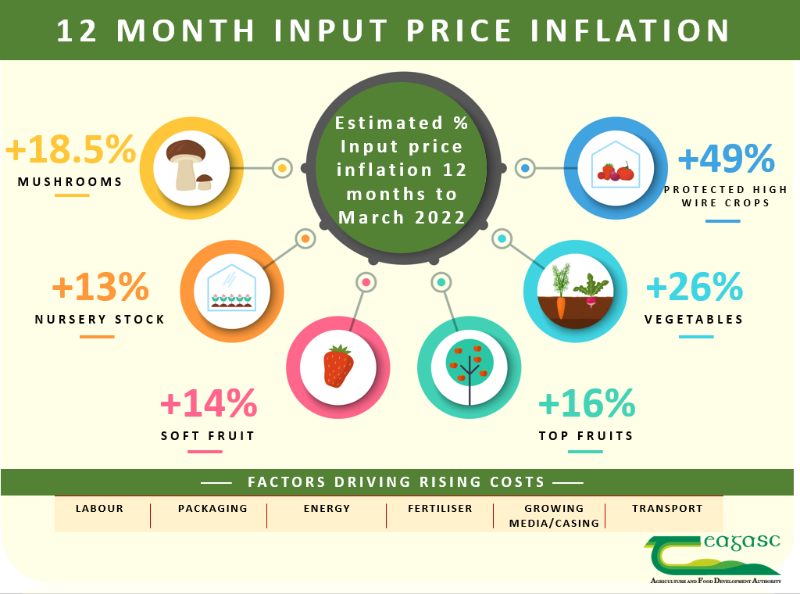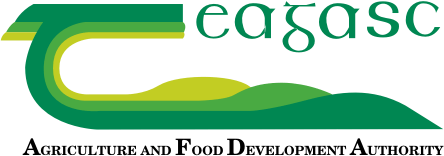26 April 2022
Horticultural input price inflation continues to squeeze growers’ margins
Horticulture crop input prices have risen significantly in the past twelve months since March 2021, initially due to external macroeconomic factors, but more recently due to the invasion of Ukraine.
Teagasc has revised the figures on input price inflation, first reported in November 2021, to reflect the full extent of inflation in the past twelve months up to 31st March 2022. While primary producers, for the most part, have received some retail price increases in the last twelve months, the recent rapid pace of inflation means that achieving a margin over costs for many horticultural enterprises in 2022 is becoming more challenging. A market response will be required to ensure the viability of an industry that puts local, fresh, top quality produce, on the supermarket shelf.
Valued at €477 million at farm gate level, horticulture is the fourth largest sector in Ireland after dairy, beef and pigs in terms of gross agricultural commodity output value. The horticulture sector is diverse and covers plant and food horticulture. Horticulture food includes mushrooms, potatoes, field vegetables, soft fruit, protected crops and outdoor fruit. Amenity horticulture includes nursery stock, protected crops, cut foliage, and outdoor flowers and bulbs.
The Teagasc Horticulture Development Department recently assessed horticulture input price inflation across a myriad of inputs, gathered and validated data, sourced from a range of primary producers, product and service suppliers, producer organisations and other state agencies. The key objective of this report is to surface up-to-date facts about specific input price inflation, to apportion the relative importance of inputs to the different sectors of horticulture production, arriving at average increases in costs of production in each sector up to March 2022.
Across all enterprises, there has been a sharp increase in the cost of energy, labour, packaging materials, fertiliser, and a range of other inputs that are key components of production. Teagasc estimate that total input costs have increased by between 13% and 49% depending on enterprise type.
Energy, Fertiliser, Labour and Packaging are key inputs across most sectors in horticulture. Energy related inflation is now playing through directly and indirectly across a range of inputs.
The impact on overall costs of production for field vegetables are very significant, where margins are already extremely tight. Filed vegetable producers have seen increases in the order of 26% since March 2021.
Energy is a significant input for many horticulture enterprises where crops are grown indoors in glasshouses and protected greenhouse structures and in the mushroom growing rooms leading to significant increases in cost of production, typically 18.5% in the mushroom sector.
High wire glasshouse tomato, cucumber and pepper production depends on natural gas specifically and this sector has significant exposure to the increase in gas price. Total input prices are up 49% in 12 months driven primarily by direct and indirect energy price inflation.
Dermot Callaghan, Head of Teagasc Horticulture Development Department said; “Growers have seen unparalleled increases in key input prices, particularly those inputs linked to energy. Over the winter, producers have been negotiating with their customers for price increases based on the first wave of inflation reported in the fourth quarter of 2021. As these were concluding, a second significant wave of input price inflation, linked to energy inflation and the Ukrainian invasion, started to manifest itself. Without a timely market response, margins will in some cases be completely eroded by this latest wave of input price inflation.”
The complete report is available at the following link https://www.teagasc.ie/publications/2022/horticulture-crop-input-price-inflation-2022.php

